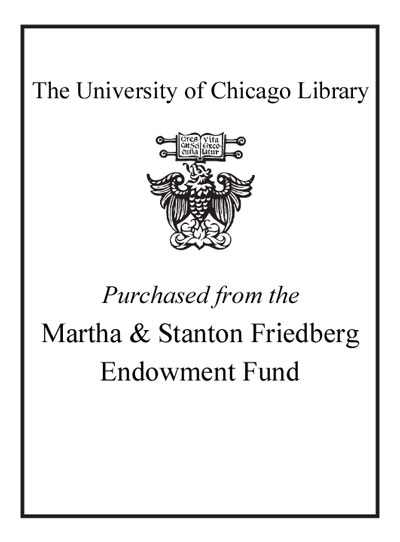Review by Choice Review
There are many books about the Punic Wars between Rome and Carthage, but they usually begin shortly before the first war and end after the destruction of Carthage at the end of the third and final war in 146 BCE. Miles (Cambridge) takes an all-encompassing approach, beginning with Phoenician trading outposts in the early first millennium, the foundation of Carthage in the ninth century, its early history and relations with Greeks and Romans and other peoples, and, finally, nearly 200 pages into the story, the First Punic War in 264 BCE. Readers thus have a good context for the narration of the three wars. Miles discusses the aftermath--including the refoundation of Roman Carthage and a review of its history--and internal politics in Carthage, as well as the nature of the ambiguous and scarce sources. The author tends to interpret the evidence in a pro-Carthaginian fashion, and perhaps to overemphasize mythology, but on balance this is a well-told story. Seventy-five pages of endnotes. Summing Up: Recommended. Upper-division undergraduates and above. J. J. Gabbert emerita, Wright State University
Copyright American Library Association, used with permission.
Review by Booklist Review
Its buildings razed, its people killed or enslaved, Carthage was so obliterated by Rome in 146 BCE that recovering its history poses a formidable challenge, which Miles accepts. Archaeologist and academic, he integrates discoveries from excavations and a fluid narrative history based on surviving ancient Roman sources. Explaining that anti-Carthaginian bias taints the latter, Miles nevertheless discerns Carthaginian perspectives in them. Seat of a trading network, Carthage was the established empire, Rome the expanding challenger. If Miles' political and military accounts of their clashes over Sicily in the first Punic War, Spain in the second, and Carthage itself in the third unfold straightforwardly for the modern reader, his emphasis on the cultural and religious milieus in which they played out places that reader distinctly within the mentalities of the ancient Mediterranean world. In Miles' treatment, the pantheons the powers honored assume an importance equal to their orders-of-battle (e.g., the hero Heracles served Hannibal as effective propaganda on his campaign in Italy). Miles' thorough, judicious, readable book revives Carthage for scholarly and recreational historians alike.--Taylor, Gilber. Copyright 2010 Booklist
From Booklist, Copyright (c) American Library Association. Used with permission.
Review by Publisher's Weekly Review
In the spring of 146 B.C.E., the Roman commander Scipio Aemilianus ordered his army's final assault upon the very weakened North African city of Carthage. Surrounded on all sides by the Romans and facing starvation and death, many Carthaginians, including the city's commander, Hasdrubal, surrendered into certain slavery while others, refusing to submit, died in a hellish conflagration that consumed their city. In destroying the physical city of Carthage, the Romans also destroyed much of its history. Until now, Rome's version of the history and significance of Carthage has been unchallenged. Drawing deeply upon fresh archeological evidence, Miles dynamically recreates daily life in ancient Carthage by examining the numerous inscriptions and monuments that bring to life the religious and public rituals of the city's inhabitants. Such material evidence offers a glimpse of Carthage's social hierarchies while also providing clues to the city's reputation as an agricultural center known for its figs and pomegranates, and its invention of the Punic cart, a primitive but highly effective threshing machine. Miles breathtakingly narrates Carthage's rise to fame as an ancient cultural and commercial center and its demise before its rebuilding as a Roman city by the emperor Augustus in the first century C.E. Illus.; maps. (July) (c) Copyright PWxyz, LLC. All rights reserved.
(c) Copyright PWxyz, LLC. All rights reserved
Review by Kirkus Book Review
An ambitious scholarly work spanning eight centuries, from 150 years before the founding of Carthage by Phoenicians to its obliteration by the Romans in 146 BCE.From its location in modern Tunisia, Carthage sat astride the east-west trade routes from the Levant to Spain, and north-south routes from Sardinia to Carthage itself. The city's settlers colonized southern Spain, Sardinia and western Sicily, and for three centuries the Carthaginian navy controlled the Mediterranean. Ultimately, Carthage collided with Rome in Sicily, setting off the first of the three Punic Wars that would end in the city's destruction. In his book-length debut, Miles (History/Univ. of Sydney) sets forth in exhaustive detail the ebb and flow of Carthaginian influence in the central Mediterranean as the city engaged in constant competition with the Hellenistic city-states of the region for resources and power. A parallel theme is the cultural contest among Carthage, the Greek states and ultimately Rome for the mantle of successor to Heracles and Alexander, a propaganda battle carried out through images on coins, erection of temples, religious ceremonies and feats of arms. Miles distills a balanced account of the city's history from the generally hostile surviving ancient sources, scrupulously explaining what he accepts and rejects from them and why. While this may be regarded as the definitive political and military history of Carthage for years to come, it is not recommended for the general reader, who will find no clear picture of Carthaginian civilization in the round, contrasted with the more familiar Greek, Roman and Egyptian cultures. What did this great city look like to a visitor? What were its values and aesthetics, its architecture and philosophy, its religious and legal institutions? What was the role of women in Carthaginian society? What did the world lose when this city was destroyed? The answers are not here, and the absence of a well-developed social dimension leaves the annals of cities won and lost feeling rather dry and lacking in context.A monumental history of this lost civilization, invaluable to scholars but otherwise of limited appeal.]] Copyright Kirkus Reviews, used with permission.
Copyright (c) Kirkus Reviews, used with permission.
Review by Choice Review
Review by Booklist Review
Review by Publisher's Weekly Review
Review by Kirkus Book Review

